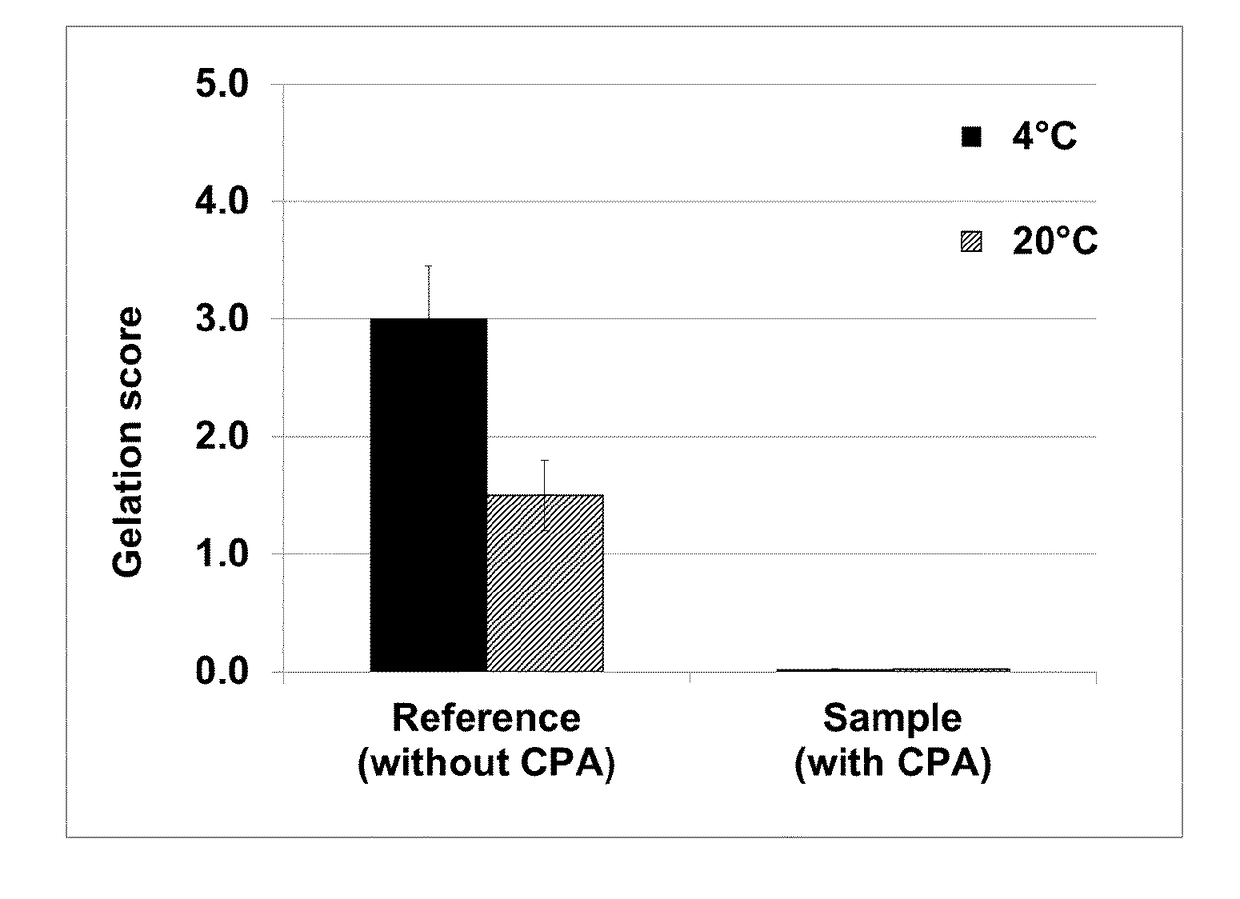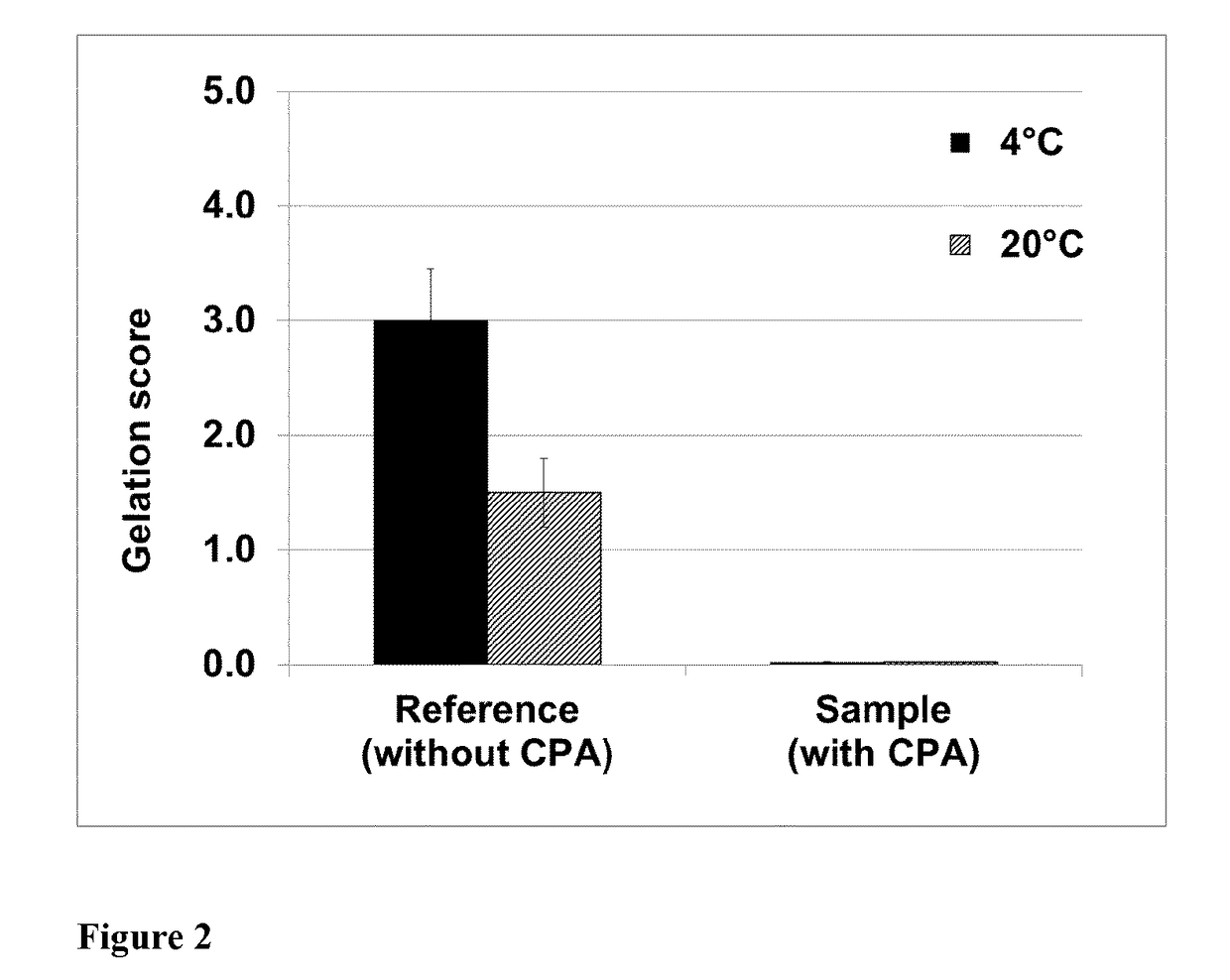Ready-to-drink beverages with improved texture by controlled protein aggregation
a technology of protein aggregation and ready-to-drink beverages, which is applied in the direction of food ingredients as buffering agents, food ingredients as ph modification agents, sweetmeats, etc., can solve the problems of physical destabilization, difficult solution to the problem, and negative influence on the creaminess of milk beverages, etc., to prolong the shelf life of products, improve the effect of organoleptic properties and good stability
- Summary
- Abstract
- Description
- Claims
- Application Information
AI Technical Summary
Benefits of technology
Problems solved by technology
Method used
Image
Examples
example 1
Process Without Controlled Protein Aggregation (CPA)
[0090]The RTD beverages can be made by the following process:[0091]Hydration (e.g., wetting) of cocoa powder for 45 minutes at 90° C. to form the cocoa slurry.[0092]A co-processed microcrystalline cellulose (MCC) and carboxymethyl cellulose (CMC) were dry blended with high acyl gellan gum, carrageenan and sucrose and then were added under high agitation to a separate tank containing fluid milk[0093]Addition under agitation of the cocoa slurry to the fluid milk tank containing hydrocolloids[0094]Addition under agitation of rest of ingredients such as sweetener, other flavors, and minerals.[0095]Aseptic homogenization at 135 / 35 bars at 70° C.[0096]Subjection of the beverage to ultra-high temperature (“UHT”) heat treatment at about 141° C. for about 3 seconds[0097]The aseptic homogenization is followed by cooling below 25° C. and aseptic filling of the RTD beverage into a suitable aseptic container, e.g. PET bottles, Tetra Pak®, jars,...
example 2
Process with CPA
[0098]The RTD beverage with controlled protein aggregation was prepared as in Example 1, but with pH adjusting by adding lactic acid before aseptic homogenization to obtain the desired pH of about 6.3 (measured at 4° C.).
example 3
Process with CPA Using Old Hydrocolloid System
[0099]The RTD beverage with controlled protein aggregation was prepared as in Example 2 process, using 90 kg of 1% fat milk, 450 g of nonfat dry milk, 160 g of whey proteins, 135 g of co-processed microcrystalline cellulose (MCC) and carboxymethyl cellulose (CMC), 35 g of carrageenan, 4.2 kg sugar, 500 g of cocoa, 70 g of 80% lactic acid, 150 g of calcium carbonate and water necessary to reach 100 kg of the final beverage.
[0100]Beverage physico-chemical properties were evaluated and sensory characteristics were judged by trained sensory panelists. Phase separation such as syneresis was found in sample prepared during shelf-life. Syneresis was measured as serum separated from 500 ml of beverages stored in PET bottle (FIG. 1). The syneresis was more severe at higher storage temperatures.
[0101]A volume based mean diameter value D [4,3] determined by laser diffraction was about 45 μm.
PUM
 Login to View More
Login to View More Abstract
Description
Claims
Application Information
 Login to View More
Login to View More - R&D
- Intellectual Property
- Life Sciences
- Materials
- Tech Scout
- Unparalleled Data Quality
- Higher Quality Content
- 60% Fewer Hallucinations
Browse by: Latest US Patents, China's latest patents, Technical Efficacy Thesaurus, Application Domain, Technology Topic, Popular Technical Reports.
© 2025 PatSnap. All rights reserved.Legal|Privacy policy|Modern Slavery Act Transparency Statement|Sitemap|About US| Contact US: help@patsnap.com



